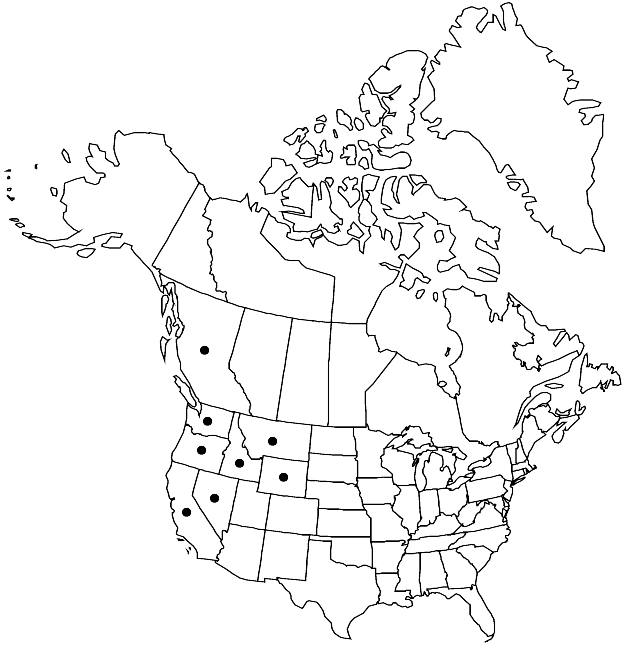Difference between revisions of "Descurainia nelsonii"
Harvard Pap. Bot. 12: 422. 2007.
FNA>Volume Importer |
FNA>Volume Importer |
(No difference)
| |
Revision as of 22:56, 16 December 2019
Annuals; eglandular; sparsely to moderately pubescent, sometimes glabrous distally, not canescent, trichomes dendritic. Stems erect, usually branched basally or slightly distally, rarely unbranched, (0.7–)0.9–3.2(–4.5) dm. Basal leaves: petiole 0.5–1.5 cm; blade pinnate, ovate or oblong in outline, 0.8–2.5 cm, lateral lobe (2–5 pairs), margins dentate or entire. Cauline leaves sessile or shortly petiolate; blade smaller distally, distal lobes often narrower, sparsely to moderately pubescent. Racemes considerably elongated in fruit. Fruiting pedicels divaricate-ascending (often at 20–45º angle), straight, (1.5–)2.5–7(–10) mm. Flowers: sepals ascending, yellowish, oblong, 0.7–1.2 mm, pubescent; petals narrowly oblanceolate, 0.8–1.2 × 0.2–0.4 mm; median filaments 1–1.5 mm; anthers 0.1–0.2 mm. Fruits erect or ascending, linear, not or slightly torulose, (0.4–)5–8(–10) × 0.7–1 mm; valves each with distinct midvein; septum not veined; ovules 6–12 per ovary; style 0.1–0.2 mm, glabrous. Seeds uniseriate, brown, oblong, 0.6–0.8 × 0.4–0.5 mm. 2n = 14.
Phenology: Flowering late May-mid Jul.
Habitat: Roadsides, sagebrush, wash bottoms, silty flats, gravelly grounds
Elevation: 800-3000 m
Distribution

B.C., Calif., Idaho, Mont., Nev., Oreg., Wash., Wyo.
Discussion
Descurainia nelsonii was treated by L. E. Detling (1939) and R. C. Rollins (1993) as a subspecies of D. pinnata, but the latter in the sense of these authors is not monophyletic, comprising instead either four or two unrelated species, respectively. ITS molecular data (B. E. Goodson 2007) suggest that D. nelsonii is most closely related to D. longepedicellata and D. paradisa. It can be distinguished from the latter species by its linear fruits with cuneate tips; D. paradisa has obovoid fruits with rounded tips. Descurainia nelsonii resembles D. pinnata subsp. brachycarpa in the orientation of fruiting pedicels and in having short styles (to 0.3 mm) and small seeds (to 1 × 0.5 mm). It differs in being branched (versus simple) at base and in having smaller flowers (petals 0.7–1 versus 1.5–2.6 mm), fewer ovules (6–12 versus 16–40) per ovary, linear (versus subclavate) fruits, and uniseriate (versus biseriate) seeds.
Selected References
None.